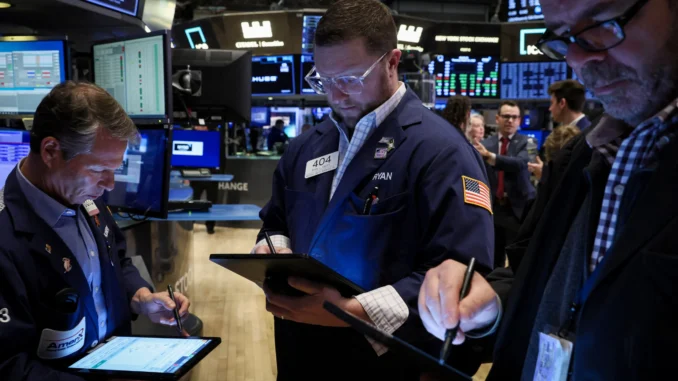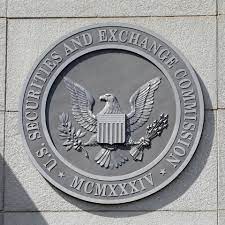
NEW YORK, April 4 (Reuters) – World stock indexes declined on Tuesday, with all three major U.S. stock indexes ending lower, while the U.S. dollar fell to a two-month low and Treasury yields eased after data suggested a cooling in the U.S. labor market.
The U.S. Labor Department report showed U.S. job openings in February dropped to the lowest level in nearly two years.
In addition, a separate report showed new orders for U.S.-manufactured goods fell for a second straight month in February amid ebbing demand for civilian aircraft.
The S&P 500 was pressured the most by the economically sensitive industrial sector (.SPLRCI), which ended down 2.3%. Materials (.SPLRCM) also finished lower.
The yield on two-year Treasuries, which typically move in step with interest rate expectations, fell 14 basis points to 3.840%, while the benchmark 10-year note’s yield slid 9 basis points to 3.342%.
Crude oil prices were near flat after Monday’s sharp rally tied to Sunday’s announcement of an output target cut by the Organization of the Petroleum Exporting Countries (OPEC) and its partners.
Brent crude rose 1 cent to settle at $84.94 a barrel, while U.S. crude gained 29 cents to settle at $80.71.
The recent spike in oil prices has added to concerns about higher costs for businesses and consumers, but some investors think U.S. data signaling some cooling in the economy could possibly allow the Federal Reserve to loosen monetary policy.
The Dow Jones Industrial Average (.DJI) fell 198.77 points, or 0.59%, to 33,402.38, the S&P 500 (.SPX) lost 23.91 points, or 0.58%, to 4,100.6 and the Nasdaq Composite (.IXIC) dropped 63.13 points, or 0.52%, to 12,126.33.
The pan-European STOXX 600 index (.STOXX) lost 0.08% and MSCI’s gauge of stocks across the globe (.MIWD00000PUS) shed 0.24%.
The Fed and other central banks have been raising interest rates to bring down inflation, and investors have been trying to gauge how much longer the tightening cycle will continue.
“Cooling down of the labor market is one of the things necessary to combat inflation,” said Andrzej Skiba, head of the BlueBay U.S. fixed income team at RBC Global Asset Management in New York.
On Tuesday, rate futures markets were pricing in a roughly even chance of a 25 basis-point rate hike in May, with rest of the odds tilted toward a pause from the Fed. On Monday, the probability of a 25-bp hike was more than 65%.
The U.S. dollar index dropped to a two-month low of 101.45 and was last down 0.5% at 101.56. Sterling rose to a new 10-month high against the dollar, while the euro reached its highest level since February. The euro was last up 0.5% at $1.09550.
“We believe the buck will slowly but surely continue to dwindle as the challenges of a recovering economy that wants to get away from dollar dominance will put downward pressure on its value,” said Juan Perez, director of trading at Monex USA in Washington.
The Australian dollar came under pressure after the Reserve Bank of Australia left interest rates unchanged after 10 straight increases. It was last down 0.5% against the U.S. dollar at $0.6754.
Spot gold added 1.8% to $2,020.42 an ounce.



